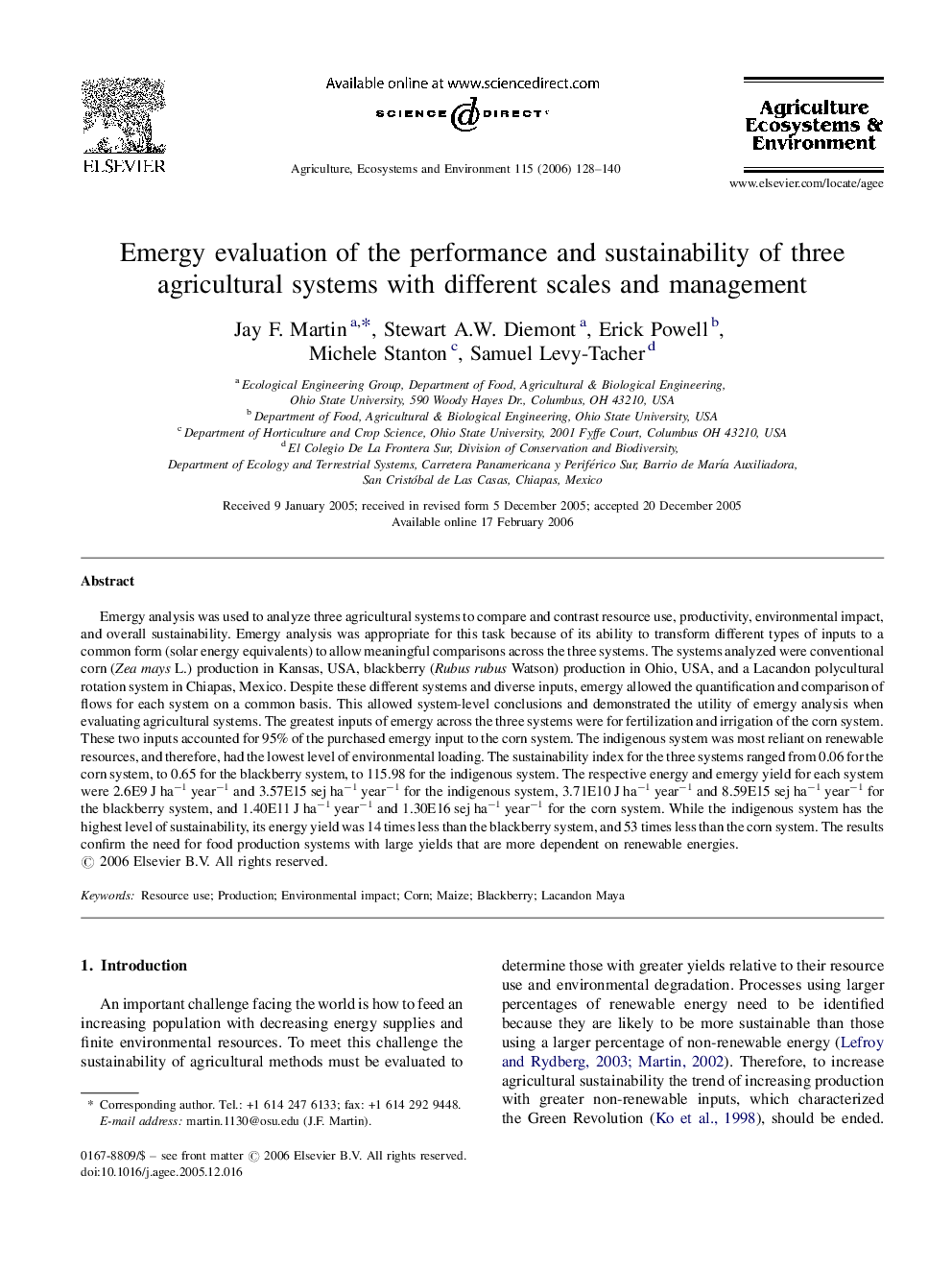| کد مقاله | کد نشریه | سال انتشار | مقاله انگلیسی | نسخه تمام متن |
|---|---|---|---|---|
| 2415886 | 1552148 | 2006 | 13 صفحه PDF | دانلود رایگان |

Emergy analysis was used to analyze three agricultural systems to compare and contrast resource use, productivity, environmental impact, and overall sustainability. Emergy analysis was appropriate for this task because of its ability to transform different types of inputs to a common form (solar energy equivalents) to allow meaningful comparisons across the three systems. The systems analyzed were conventional corn (Zea mays L.) production in Kansas, USA, blackberry (Rubus rubus Watson) production in Ohio, USA, and a Lacandon polycultural rotation system in Chiapas, Mexico. Despite these different systems and diverse inputs, emergy allowed the quantification and comparison of flows for each system on a common basis. This allowed system-level conclusions and demonstrated the utility of emergy analysis when evaluating agricultural systems. The greatest inputs of emergy across the three systems were for fertilization and irrigation of the corn system. These two inputs accounted for 95% of the purchased emergy input to the corn system. The indigenous system was most reliant on renewable resources, and therefore, had the lowest level of environmental loading. The sustainability index for the three systems ranged from 0.06 for the corn system, to 0.65 for the blackberry system, to 115.98 for the indigenous system. The respective energy and emergy yield for each system were 2.6E9 J ha−1 year−1 and 3.57E15 sej ha−1 year−1 for the indigenous system, 3.71E10 J ha−1 year−1 and 8.59E15 sej ha−1 year−1 for the blackberry system, and 1.40E11 J ha−1 year−1 and 1.30E16 sej ha−1 year−1 for the corn system. While the indigenous system has the highest level of sustainability, its energy yield was 14 times less than the blackberry system, and 53 times less than the corn system. The results confirm the need for food production systems with large yields that are more dependent on renewable energies.
Journal: Agriculture, Ecosystems & Environment - Volume 115, Issues 1–4, July 2006, Pages 128–140